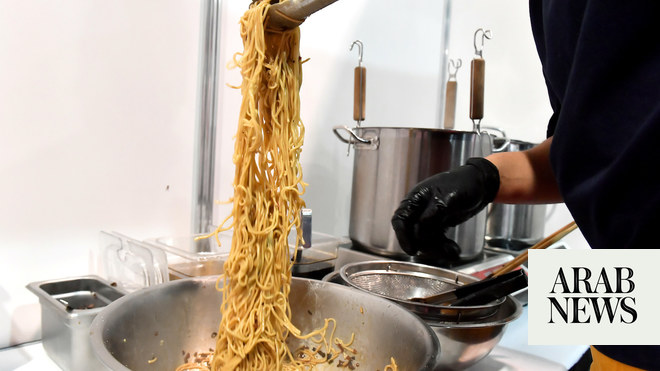
n matters of culture my late mother, Claire, took her lead from the great Times columnist Bernard Levin and described herself as a “pantry Jew”. She understood herself not through religious faith because, like me, she had none, but through the crumbly chopped liver she sometimes made. She liked to cook gefilte fish, both boiled and fried, following her grandmother’s recipe. The boiled, I hated. Once cooled, the fishy jelly had the texture of phlegm and the mixture of white fish, matzo meal and a little sugar tasted of carelessness.
But the deep-fried, an idiosyncrasy of the Anglo-Jewish community, was entirely different. I loved the outer crunch and the fluffy interior, and knew that it would be even more delicious if I were allowed to eat it hot, straight from the bubbling oil, but I was not. Claire insisted it had to be eaten cold and could not explain why, other than to say it was “better that way”.
I did not get an answer until 1997 when Claudia Roden’s Book of Jewish Food was first published in the UK. In the introduction to the fish section, Roden explains that “because it was always cooked in advance for the Sabbath, fish was usually eaten cold”. I read this to my godless mother. I pointed out that her insistence I should eat it cold was therefore a vestigial stump of childhood religious observance. She was delightfully livid.
It’s fitting that my first interaction with Roden’s masterpiece should not have been to consult a recipe, or check a cooking technique, but to nail a point of cultural practice. Although it sits on my cookbook shelf, and includes many recipes, The Book of Jewish Food is not really a cookbook at all. “In many ways it was the first great encyclopedia of Jewish life,” says the historian and keen cook Simon Schama. “I love it for the narrative embroidery around the recipes. That had been done before, but Claudia did it in more detail and with more sophistication than anyone else.” The chef, writer and restaurateur Yotam Ottolenghi agrees. “It’s timeless but also academic. It has a thoroughness that you don’t really see any more.”
That thoroughness is a function of Roden’s reluctance to stop researching. The book was 16 years in the making and was only eventually published because of an intervention by her American editor. Judith Jones, also responsible for shepherding the likes of Anne Frank, John Updike and Julia Child to publication, had to wrest it from her hands. “I just wanted to carry on travelling the world and talking to people,” Roden says now.
The travels produced a work that finally shifted the emphasis in Jewish scholarship. It had long been focused on the story of the Ashkenazi of Europe, and the hefty salt beef, chopped liver and chicken soup traditions. The Egyptian-born Roden wrote a book that turned to the vivid, sunlit food of the Sephardi, generally associated with Spain, North Africa and the Middle East. “Most Ashkenazi recipes are the same wherever they come from,” Roden says. “There might be a slight difference between countries, but not much. But Sephardi recipes change not just from country to country but from city to city.” As a result, she devoted two-thirds of the book to those stories. At the time this was seen as almost subversive. “One of the reviews in Israel called it the revenge of the Sephardim,” she says.
Here, then, are vibrant recipes for Moroccan Sabbath dishes involving a cow’s foot, chickpeas and nutmeg, or four ways with harissa. Here is a saffron risotto from Italy and for Syrian cheese pies, for tagines, ginger garlic rice and salamis made with goose. But these recipes aren’t just nice things for dinner; they illustrate the ornate and detailed stories of everyday Jewish life which surround them.
Hilariously, prior to agreeing to write the book, Roden had insisted in a speech that there was no such thing as Jewish food – “Just food from different places where Jews live, adapted to dietary laws.” It was her then British editor, Jill Norman, who suggested the subject, picking up from Roden’s hugely successful 1986 book on Middle Eastern food. “Mostly it was to satisfy my own ignorance of Jewish food and traditions,” Norman says.
However indispensable a volume it has been to a generation of home cooks like me, it’s as nothing compared to its influence on restaurants; to the resurgence in Sephardic cooking, exemplified in Britain by places like Honey & Co, Palomar or Bubala. “In Israel I would meet chefs of Iraqi or Syrian Jewish background who would describe joy at seeing their community’s recipes in print,” Roden says. I ask Itamar Srulovich of London’s Honey & Co whether any of the book’s recipes are on their menu. He mentions the quince tagine and the lemon and olive tagine. “And, of course,” he says, “we must mention the orange and almond cake.”
Yes, we must. Roden, who first included it in her Middle Eastern food book, got the recipe from her then sister-in-law, who in turn got it from her grandmother who grew up in Aleppo, Syria. But as her family migrated there from Spain, Roden describes it as a Judeo-Spanish cake. Boil two oranges until soft. Purée them, peel and all, and whip that up with eggs, ground almonds and a little baking powder. I follow the instructions and produce a delightfully light, moist, irresistible piece of orangey wonder, fixed halfway between a cake and a pudding.
Recipes for it are now everywhere. Nigella Lawson included an adapted version using clementines in How To Eat (crediting Roden). Pret a Manger then credited Nigella when they started selling a version. Rachel Roddy includes it in one of her books; James Martin has made it on Saturday Kitchen. Roden understands its appeal. “It is perfect in its simplicity.”
Indeed it is. Before making that Sephardic cake, I return to my Ashkenazi roots; to solid food I have long described as engineered for a life on the Russian Steppe when the Cossacks are coming. I make latkes because any excuse for grating up potatoes and frying them must be taken. I make a pickled cucumber salad. And, in memory of Claire, I fry gefilte fish and feed it to my family hot, and imagine her grinding her teeth in unfocused fury. That’s the thing about Claudia Roden’s Book of Jewish Food. It is a volume that spans the world. It goes everywhere. But in the end, it always takes me home.
The Book of Jewish Food: an Odyssey from Samarkand to New York by Claudia Roden was first published in 1997. It is now available from Penguin at £26
Jay’s news bites
The Owl, which styles itself as the first pub inside the Kirkgate Market in Leeds, started doing at home meal kits for locals last year. They’re now available for delivery to much of the UK, and come recommended by a number of readers. A ‘signature’ menu for two at £95 might include sourdough crumpets with smoked cod’s roe, followed by poached lobster and a horseradish velouté, while the non-meat offering may bring roscoff onions with heritage potatoes, mint and horseradish, then a roasted cep, dauphinoise and leek pie. Finish with a blackberry and apple crumble tart.
At the other end of England, Peter Sanchez-Iglesias of Bristol-based restaurants Paco and Casamia has launched the Paco Tapas Meal Kit, again for delivery across much of the UK. It’s a hefty £120 for two, but runs to 13 elements, including jamon croqueta, gambas al ajillo, duroc ribs, stuffed quail and a chocolate mousse with olive oil and toast. There’s also a Valentine’s option which includes a bottle of cava.
The India Club, which was established on London’s Strand more than 50 years ago, is once again facing the threat of closure from its landlords, and has established a crowdfunder to pay for its defence. A previous attempt to redevelop the building by the landlords was rejected by Westminster council in 2018 because losing the club and restaurant was deemed harmful to the ‘cultural provision’ of the area.












